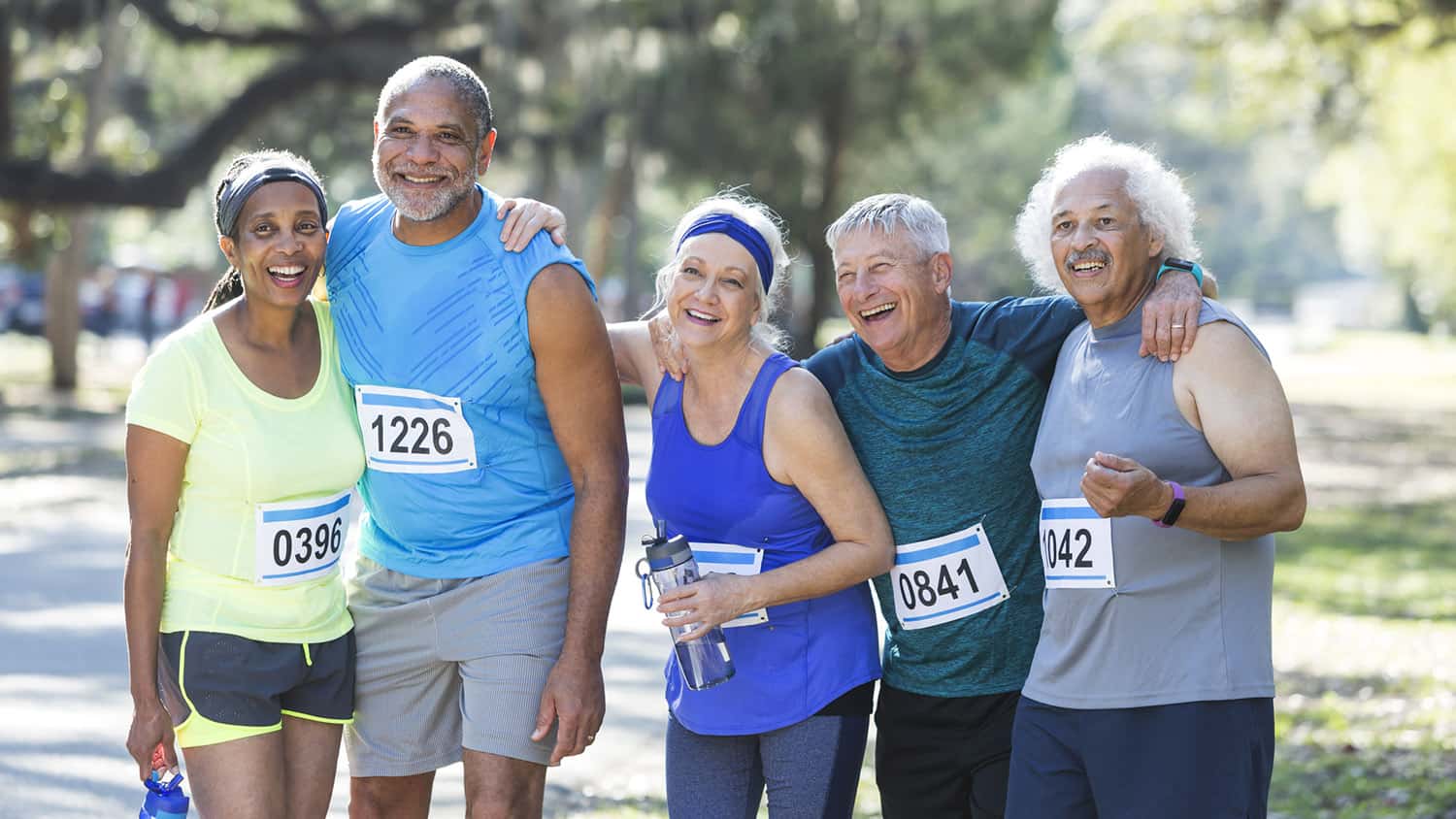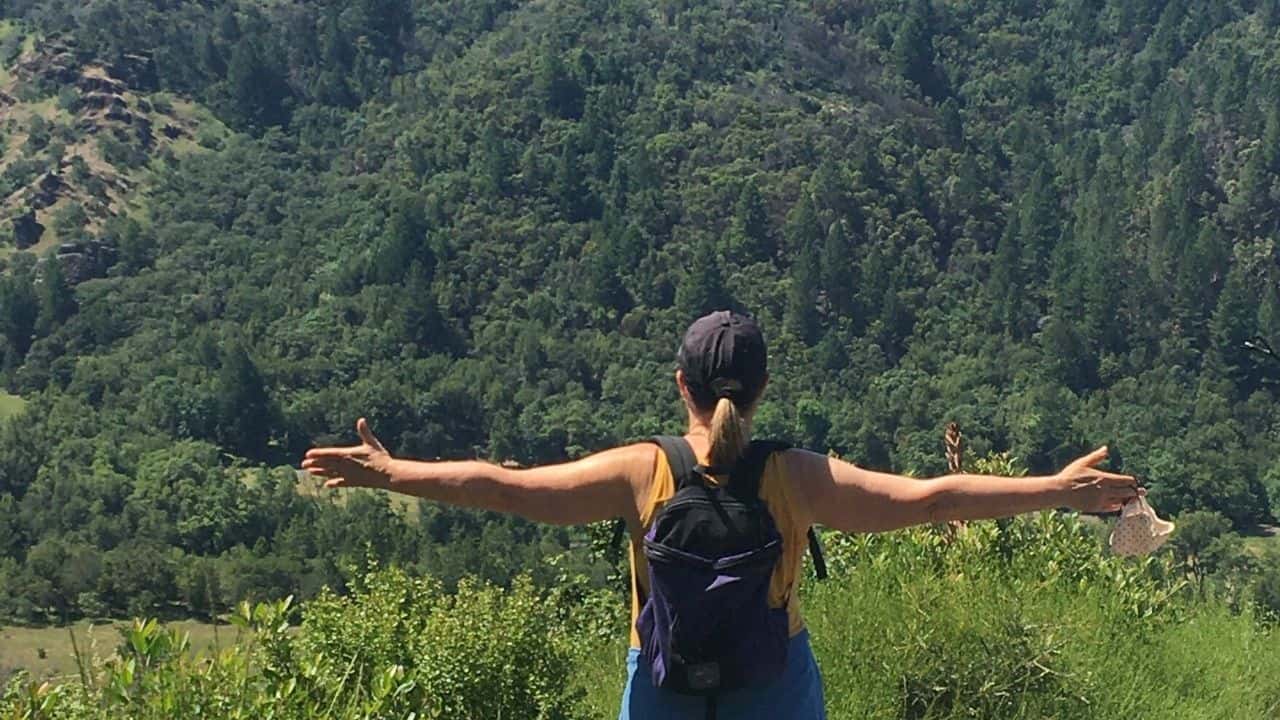The #1 Exercise You Need to Increase Fitness in Your 60s and Beyond
Remember The Wizard of Oz and the scene in which Glenda the Good Witch floated down from the sky in her iridescent bubble?
You might be thinking, “What does Glenda the Good Witch have to do with staying fit as I age?”
It’s all about the bubble.
Imagine putting a child inside a gigantic bubble. If you told the child to push the edges, they would crouch, jump, wiggle, dance, reach, and press in all directions.
Now imagine yourself inside the bubble. How far can you reach over your head? How far can you reach down to the ground? What about to the left and to the right? How much surface area inside the bubble can you reach?
The bubble represents your comfort zone. It’s where you can manage quite well physically, mentally, and emotionally.
At earlier stages of life, our circumstances presented ample opportunities to get out of our comfort zones. We may have pushed our bodies to pick up children, run, play, or even compete in athletics. As we enter our 50s, 60s, and beyond, though, it’s tempting to stick to familiar routines for exercise.
It’s a challenge to keep moving despite the aches, pains, injuries, or health challenges during the aging process. It’s even more of a challenge to increase our range of motion and fitness as we age. But it’s possible, and getting familiar with “The Bubble Concept” will help you do it!
What’s the Bubble, Really?
“The Bubble Concept” applies to aging in a much broader way, but we’ll start with your physical range of motion. You’ve already got the image in your mind of the giant bubble.
On a practical level, the bubble is your sphere of motion, or your sphere of function. This is the actual distance around your body in which you can move while maintaining your balance and staying free of injury.
If you push too far, you might get hurt. But if you never push the edge of your bubble, the muscles, bones, ligaments, and tendons that can get you to that edge will sense they’re not needed, and they will atrophy.
“Use it or lose it” is true.
As we age, it’s natural that we cannot move as quickly or as dynamically as a child. The reality is that our tissues do change, and there are some things we just cannot do anymore. I’m not suggesting that you do anything that hurts, or push past where you feel safe.
All that said, we absolutely must maintain our abilities to step, balance, and reach in many directions. Let’s get specific with one exercise you can do anywhere, anytime, without any special equipment.
Push the Bubble – A Practical Example
My favorite exercise to teach older adults is called “The Clock & the Bubble.”
You’re still inside that big bubble. Now imagine a clock on the ground. You’re standing in the center, and 12 o’clock is just ahead of you. With your right foot, step to the 12, then to the 1, 2, 3, 4, 5, and straight back to the 6. Now take your left foot back to the 6, and around to the 7, 8, 9, 10, 11, and 12.
In a methodical way, you’ve just covered the bottom of the bubble. If it was easy, go around again, and step a bit further. Over time you can extend the distance you step to “push the edge of your bubble.”
If you feel unsteady with this, hold a walking stick or broomstick as you do it.
Here’s how to take it a step further. Step with your right foot to 12. Keep steady in your legs while you try to “paint” the inside of the bubble. Reach as far up, down, sideways, and diagonally as you can with your right hand. Then repeat with your left.
Image you are painting the inside of the bubble, and your goal is to cover as much surface area as you can. If you find a good stretch, stay there, and explore it.
Then you can repeat the painting exercise at each number on the clock. For example, take your right foot to the 3, and repeat the reaches with both hands.
This requires a good imagination! Here’s a video to help you do it and follow along.
The Clock & The Bubble is a systematic way to literally cover your bases. By the time you finish, you will have reached in front of your body, to the sides, behind, down, and up, so you will keep your joints moving in every direction.
Doing this one exercise not only helps you increase your range of motion. It also helps you improve core strength and balance.
Push the Bubble – The Bigger Picture
We’ve just explored how to use the bubble concept to increase and maintain range of motion, strength, and balance. We also need to push the edge of our bubble with regard to the variety and intensity of our physical activity.
Do you always walk the same route, distance, and speed? Do you always follow the same yoga or Pilates routine? To keep growing and learning, our bodies and brains need to be challenged by novelty and intensity.
My specialty is helping people age well through healthy movement and lifestyle choices. I’m not a psychologist, brain scientist, or counselor. But it’s fairly easy to see the connections between mind, body, and spirit.
The bubble concept also applies to our cognition, emotions, relationships, thoughts, and beliefs. If we read the same kinds of books, magazines, and websites that we’ve always read, we won’t be exposed to new ideas.
If we talk to people who think exactly like we do, we aren’t challenged to consider new perspectives. If we stay inside our comfort zone of activities, hobbies, and friends, we aren’t forced to grow and learn. “Use it or lose it” applies here too.
I encourage you to think about ways that you can push the bubble by trying new experiences daily.
5 Practical Ways to Push the Bubble
Let’s put the bubble concept into practice! Here are 5 more ways to push your personal bubble.
- Change up your walking routine. Walk in a different place. If you feel safe, get off the sidewalk or road, and walk on uneven ground to strengthen your feet, ankles, legs, and balance.
- In your next exercise session of any kind, ask yourself, “How could I do this differently?” Reach in a different direction with your feet or arms and stretch your body in a new way.
- Are you really pushing the bubble when you lift weights or use resistance bands? Find a resistance that challenges you. Here’s how to find the right weight and number of repetitions.
- Challenge yourself to try a completely new fitness class or video. Do something you have never done before, and approach it with curiosity.
- Look for non-physical ways to get outside your comfort zone by talking to someone with a different background, listening to different music, or simply taking a new route in your car or other transportation.
Now it’s your turn!
How do you “push your bubble”? How do you get outside of your comfort zone physically and emotionally? Please share your thoughts in the comments below.
Tags Fitness Over 60






